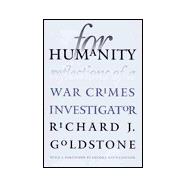Justice Goldstone begins by describing how he became involved in the transition of South Africa from an apartheid state to a democracy and why he was chosen in late 1992 to head the commission that investigated criminal conduct that accompanied that transition. He then considers his time as chief prosecutor for the United Nations Tribunals, speaking not only of th








